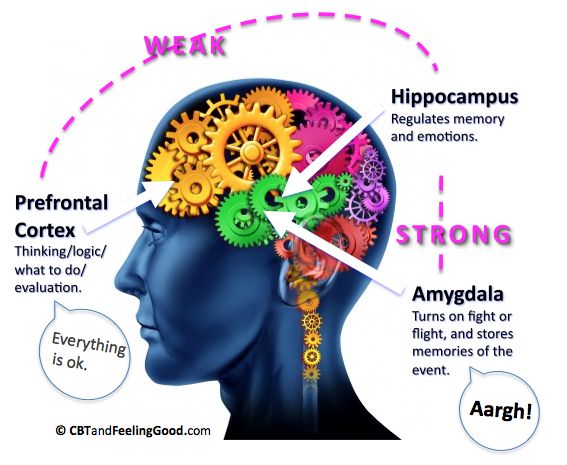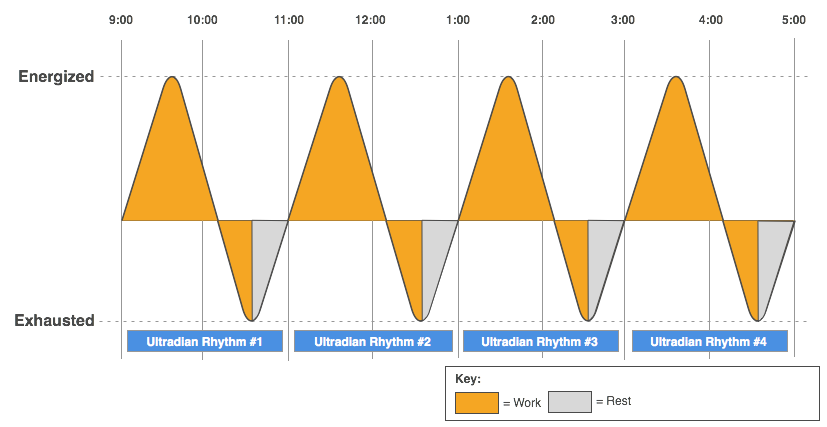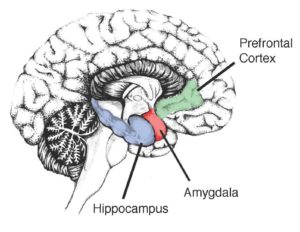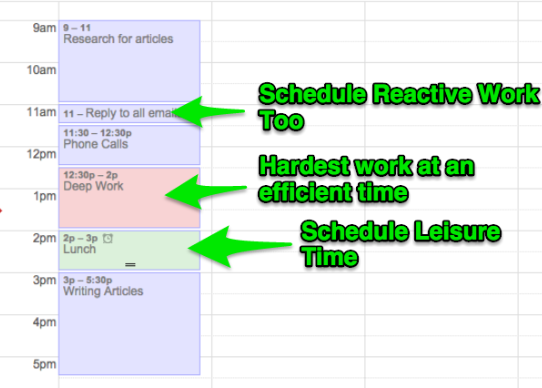You’re being interrupted every three minutes to handle something urgent. You have a report that’s due at the end of the day. But your coworker just called you into a meeting that will “just be a minute.” When you get back, you just have to send a quick email. After you start on that email, another coworker asks you to jump on a client call.
You don’t think you’re procrastinating because you’re busy every moment. But just because you’re super busy doesn’t mean you’re being productive. You’re actually guilty of a subtle form of procrastination known as priority dilution. This means you are distracted from focusing on your most important work. But it’s not your fault that you’re getting consumed with all these small disruptions. Your brain is actually hardwired to handle them. Here’s the science behind managing the small disruptions so you can be more productive.

About That Hidden Form of Procrastination
Imagine that you’re hiking on a trail and a snake suddenly crosses your path. With lightning speed, your amygdala reacted to that snake before you even noticed it.
The amygdala is a small but powerful set of neurons in your brain that act as the rapid emotional response center. It’s known as the “fight-or-flight” mechanism. It acts like your own personal security guard to protect you from danger.
The amygdala helps you react quickly when there’s a threat in the jungle, but it can be a problem in the modern world. It can’t tell the difference between a real physical threat (like a snake) and an imagined threat (like an unread email). It’s impulsive and overprotective.
When you get stressed by an unread email that interrupts your workflow, your amygdala triggers a false sense of urgency. You feel compelled to “put out the fire” and respond to that email. But fight-or-flight mode actually causes you to make mistakes. Your mind is quickly acting on emotional impulses rather than logic.
When your brain shifts into survival mode, it causes big mistakes at work. Michigan State University conducted a study where 300 people were asked to complete a computer-based sequence test. At random times, they were briefly interrupted to type two letters before returning to the test.
This 2.8-second interruption doubled their errors. When 4.4-second interruptions were introduced, their errors tripled.
Erik Altmann, a lead researcher on this study, said that the error rate increased because “the participants had to shift their attention from one task to another. Even momentary interruptions can seem jarring when they occur during a process that takes considerable thought.”
If you can resist jumping at every false alarm your amygdala triggers, you can focus on producing higher quality work. That’s where the prefrontal cortex comes into play.
Plan Long Term Instead
If your amygdala sounds a fire alarm, then your prefrontal cortex has the power to shut off that alarm. The prefrontal cortex is responsible for functions like long-term planning, decision making, problem solving, reasoning, thinking about emotions, and controlling the amygdala’s impulses. It is the orchestra leader of your brain, helping you avoid impulsive behavior and directing how you pay attention to a task. You unlock the full potential of your prefrontal cortex when you schedule time blocks to focus on a single task.

Scheduling time blocks of uninterrupted work increases productivity. Leslie Perlow, a professor of leadership at Harvard Business School, conducted a study at a small software company. The engineers were constantly being interrupted, so they often had to work overtime just to complete a project.
During the study, the engineers were given uninterrupted time. Perlow designated scheduled time blocks from 9:00 am to 11:00 am and 3:00 pm to 5:00 pm as quiet time when all emails and phone calls were banned. From 11:00 am and to 3:00 pm, they could answer emails and phone calls.
The results said it all: 59% of the engineers increased productivity in the morning, and 65% increased during afternoon quiet time. Scheduling time to focus on a single task isn’t just productive. It allows your prefrontal cortex to do all the things it’s good at, like problem-solving and reasoning. You can focus on getting high-quality work done.
If you are from an afternoon slump, you should learn here how to overcome this problem.
Hack Your Calendar
You can actually hack your brain’s natural energy cycles to be more productive.
Our bodies have a natural time block in place, known as the ultradian rhythm. We alternate between energy peaks and troughs. This cycle repeats itself throughout the day.
During this rhythm, the brain naturally switches activity from the left to the right side of the brain. The left brain is active for about 90 minutes. Then, the right brain takes over for about 30 minutes.
The left side of the brain is responsible for logic and organization. So that 90-minute window is the ideal time to focus on solving one intense problem without any distractions. Distractions will mess up your flow during this natural cycle.
The right side of the brain is responsible for creativity and imagination. During that 30-minute window, the brain tries to rejuvenate itself with a natural break. You can use this time to relax and catch up on less important tasks.
Time blocking forces you to set priorities and minimize distractions during your peak productivity times. With that in mind, here are three ways to become the boss of your priorities.
1. Schedule blocks of time on your calendar
Split your day into several time chunks. Assign certain time periods for completing your most important tasks. You can even schedule reactive work, like replying to emails, and limit it to twice a day.
2. Track your time
Use software like RescueTime or a mobile app like Instant to automatically track your daily activities. You can audit your time to see where you’re being distracted.
3. Shut down distractions
Sometimes simply turning off your electronic device isn’t an option. Tools like Freedom allow you to block email alerts across all your devices for a scheduled time period.
Your amygdala drives you towards priority dilution, while your prefrontal cortex plans for the important tasks. If you have too many priorities, you’re not productive — you’re just busy. Don’t let your amygdala always dictate what’s urgent, and your prefrontal cortex will thank you.
If you liked what you’ve read here, you just might love the I Done This application, especially the premium features. Please click here to learn more about what it can do for your organization’s productivity.


